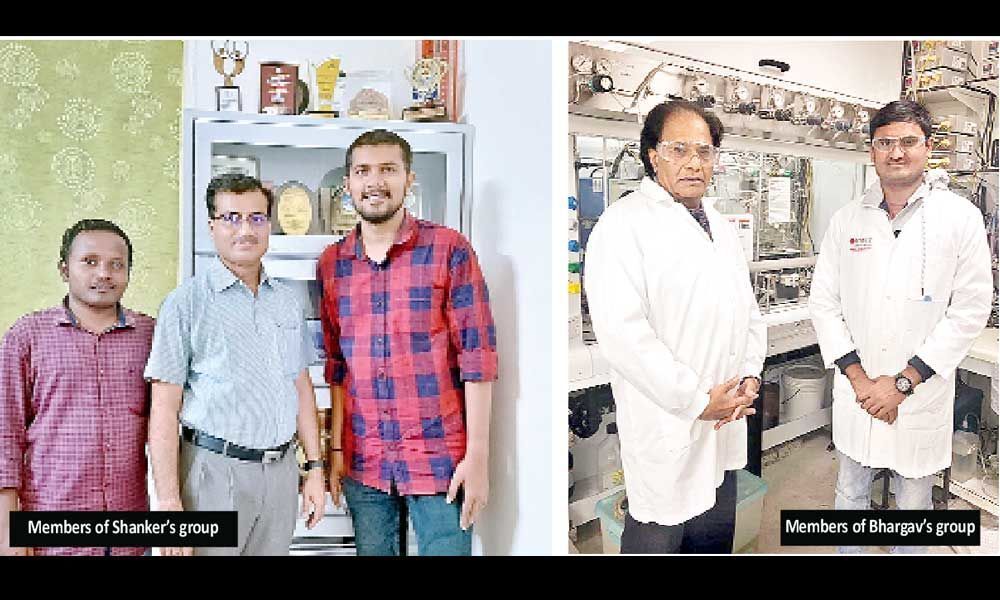Live
- Govt plans to establish offshore Johns Hopkins University Campus in India
- Goa Aces clinch Indian Racing League title
- Study finds how hormone therapy can reshape the skeleton
- High-street fashion players looking at India for manufacturing: Report
- Shreyas Iyer to lead Mumbai as Prithvi Shaw returns for Syed Mushtaq Ali Trophy
- 'Failed to resolve crisis': NPP withdraws support from BJP govt in Manipur
- Chennai: Actress Kasturi Remanded in Custody Until 29th of This Month
- Aaqib Javed likely to become Pakistan's new white-ball head coach
- BJP panel to draft poll charge sheet against AAP govt in Delhi
- Allu Arjun Thanks Fans in Patna, Teases 'Pushpa 2' Release
Just In
NITW, RMIT come up with cost effective graphene


The National Institute of Technology, Warangal, (NITW) researchers have come up with a cost-effective and eco-friendly way of producing grapheme from the bark of eucalyptus trees, also known as gum trees, an abundant resource in India and Australia.
Warangal: The National Institute of Technology, Warangal, (NITW) researchers have come up with a cost-effective and eco-friendly way of producing grapheme from the bark of eucalyptus trees, also known as gum trees, an abundant resource in India and Australia. In a collaborative research, two research scholars Saikumar Manchala and V S R K Tandava headed by Dr Vishnu Shanker, associate professor of Chemistry Department, NITW, and Jampaiah Deshetti and Suresh K Bhargava of the RMIT University in Melbourne, Australia.
Graphene is the thinnest and strongest material known so far which is flexible, transparent and conducts heat and electricity 10 times better than copper, making it ideal for anything from flexible nanoelectronics to better fuel cells. The research was initiated and conducted by Dr Shanker's research group in the Department of Chemistry and Centre for Advanced Materials, NITW and then continued by Prof Bhargava's group in the Centre for Advanced Materials and Industrial Chemistry at the RMIT University.
Eucalyptus bark extract is cheaper, sustainable and highly efficient than current synthesis methodologies of graphene. Prof Bhargava said eucalyptus bark extract was never used before to synthesise graphene sheets. It is in fact a superior method, both in terms of safety and overall cost, he added.
"The new method not only brings down the cost of producing graphene from around US $100 per gram to just 50 cents, its availability at low cost would augur well for the research paving way for new technologies," he said. Graphene's distinctive features make it a transformative material that could be used in the development of flexible electronics, more powerful computer chips and better solar panels, water filters and biosensors, he said.
Dr Vishnu Shanker said, "this green chemistry avoids the use of toxic reagents, potentially opening the door to the application of graphene not only for electronic devices but also biocompatible materials."
A novel approach to graphene synthesis
Chemical reduction is the most common method for synthesising graphene oxide as it allows for the production of graphene at a low cost in bulk quantities.
This method however, the use of reducing agents that are dangerous to both humankind and the environment.
When it tested for the application of a supercapacitor, the E-graphene produced using this green and novel method matched the quality and performance characteristics to the traditionally produced graphene.
"Graphene is a remarkable material with great potential in many applications due to its chemical and physical properties," Bhargava and Shanker said.
The study 'Novel and Highly Efficient Strategy for the Green Synthesis of Soluble Graphene by Aqueous Polyphenol Extracts of Eucalyptus Bark and its Applications in High-Performance Supercapacitors' was published in the ACS journal Sustainable Chemistry and Engineering.

© 2024 Hyderabad Media House Limited/The Hans India. All rights reserved. Powered by hocalwire.com






